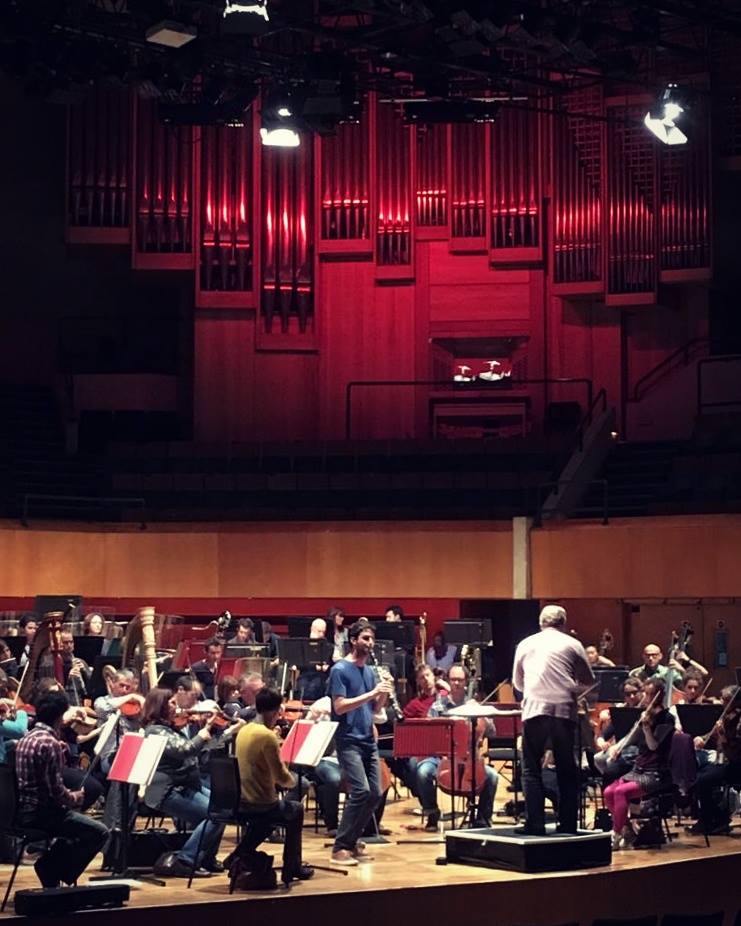The Hallé Orchestra – Mussorgsky’s Pictures At An Exhibition
St David’s Hall, Cardiff
Wednesday 1st November 2017
It’s a welcome return to Cardiff for one of the longest running orchestras in the whole of the British Isles. The Hallé amazingly date all the way back to 1858 and have been a staple artistic legacy in Manchester ever since. Its popularity and growth has been in part over the past decade due to the great conductor Sir Mark Elder, a shinning star in the classical music world who has raised the banner for the medium in spectacular ways.
In keeping with the Russian festivities rife in the current time, this evening would be peppered by the scorched Spanish and subtle French influences we have come to expect from Maurice Ravel.
Born in the Basque Country (like his mother) Ravel would hold dear to him a deep admiration for Spain: for its colour, its sun, beauty and life. His Rapsodie Espagnole is one fitting tribute to the country in orchestral form. Here, The Hallé brought to life the sleepy, steamy nights, the ecstatic dances and sense of wonder Spain can impact upon you. It even features castanets for that authentic vibe. Ravel is a great orchestrator, but is he a great composer? It’s pleasant music, but he reminds me of a French latte: that of just frothed milk, lacking the expected coffee content.
A brief appearance from Debussy followed. In his own Rhapsody for Clarinet and Orchestra, he strived to compose a petite little number for students of the instrument during his heyday in Paris. Here, Sergio Castello-Lopez handled this curiosity with grace and refinement. It has that lilting quality you find in Debussy, with a huge leaning on the music from the Far East. It doesn’t quite do it for me, though it has some pleasing moment within its meagre eight minutes.
Ravel’s Bolero ended the first half with an expectedly jolting feeling. It’s bread and butter to lovers of French music and was famously used by ice skaters Torvill and Dean in their routine for the Winter Olympics back in 1984. It’s once again, insides by Spain but this time it’s the dances. This musical oddity, could be considered a precursor to minimalism, whilst some would claim its not even music at all, due to its lack of compositional development. It’s a nice concerto for orchestra for them to try out the famous melody and complement the passages of notes between them. The double snare drums play the most important part, as they play relentlessly throughout. The Hallé do what they do best and really enjoy this piece and we as an audience feel this. The final, collapsing moments of the music never fails to be hair raising.
But what of Russia? Well, Ravel being such a grand orchestrator took on Pictures at an Exhibition by Modest Mussorgsky. Originally written for solo piano, this was a fitting tribute to Victor Hartmann, an artist who died young. 400 works were exhibited in his honour and Mussorgsky enjoyed the idea of going around the space of the exhibit so much, that he felt it be right to set to music a selection of these pictures. Whilst most of these works are lost to time, we thankfully have the compositional responses, in their most brilliant and evocative ways.
Ravel brings to life the awesome power of the great, Russian composer. Sadly, Mussorgsky’s dependancy on alcohol resulted in many an unfinished or unorchestrated work. Through the aid of other composers, can we be treated to his incredible grasp of stellar melodies, deep harmonic structures, striking bass chords and the essential feel of Russian music. Many highlights are abound here. The Promenade opener (famously used in Yes, Minister) is a super fanfare for brass, detailing the passage between viewing each art work in the gallery. This themes frames the entire work and has the habit of popping up when you least expect it.
Ravel was bold enough to add saxophones to his requirements and we hear in The Old Castle a lamentable, solemn mood for the instrument. We hear in the cheeky Gnomus, a wooden rattle evoking the nutcracker and the gnome who lives above his head. The Ballet of Chicks in their Shells is a witty air for the woodwind who chirp away in this proposed ballet scene where many chicks are present, some still coming out of the egg.
In Samuel Goldberg and Schmuyle, a nagging trumpet flutter represents the poor latter Jew, whilst the rich former is a bold theme, both juxtaposing each other wonderfully. The finale of The Great Gate of Kiev never fails to rouse with bell and gong blows, the entire mass of the orchestra summing up the grandeur of this gate that was never even built. With many Russian punches the works end with one the the repertoires great conclusions. The Hallé did it proud.
It’s always a pleasure to have them in Cardiff.
Rating: ⭑⭑⭑⭑
Cover photo: facebook.com/thehalle
Related articles and info:
http://thesprout.co.uk/info/things-to-do/
Get involved:
Want to reach thousands of young Cardiffians? Submit your news here or register to become a contributor.
Want to become a reviewer? Join the Sprout Editorial Group on Facebook or email info@thesprout.co.uk.
Click here for the next Sprout Editorial Group meeting.
Comment below:
It’s free and quick to comment below but we recommend signing up with your email or as a guest to keep usernames Sprouty and anonymous (and never post personal details!).
If you want more info on staying safe online, check out our online safety section.

